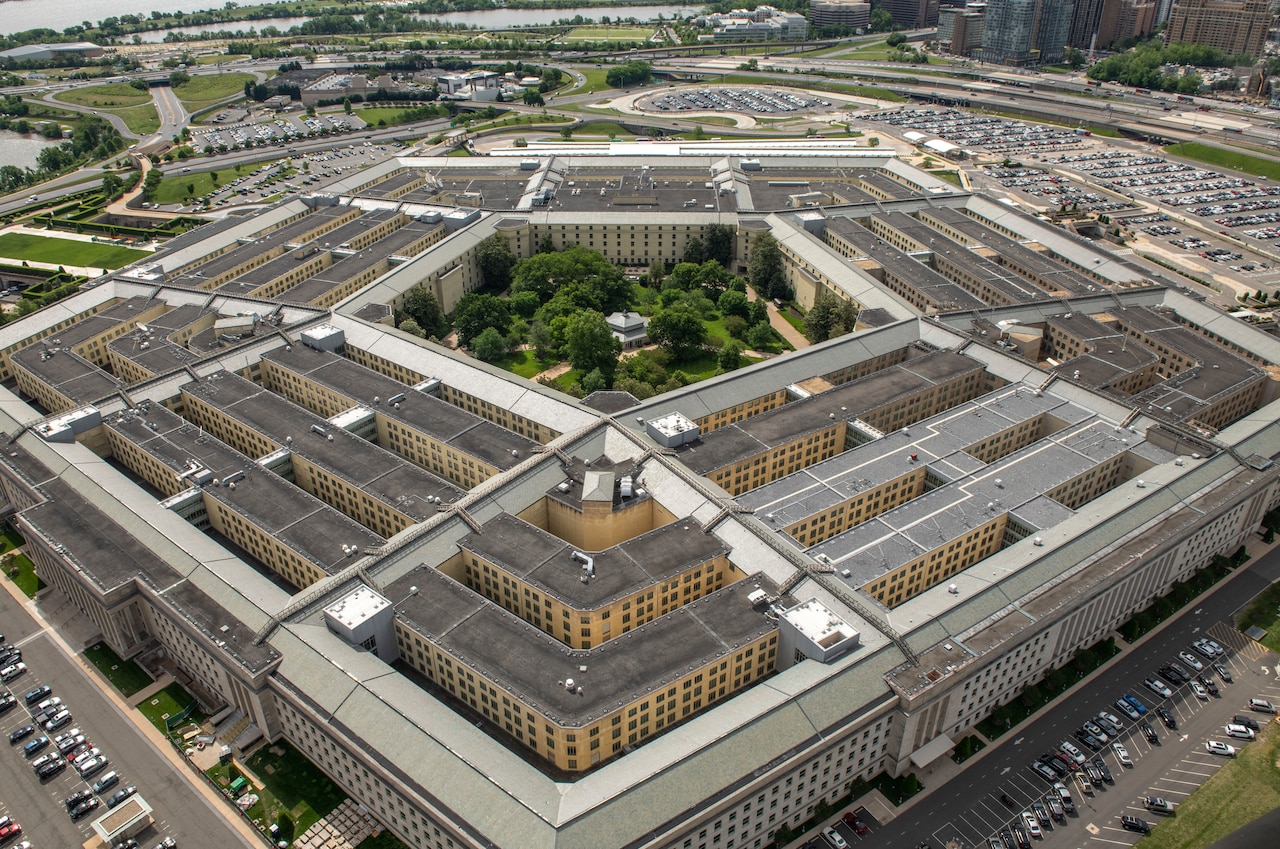
The National Defense Strategy is a living, breathing document that is the North Star to the Defense Department, and leaders in the department work every day to ensure it is implemented, Mara Karlin said during a Brookings Institution event today.
Karlin is performing the duties of the deputy undersecretary of defense for policy. She is one of the authors of the National Defense Strategy that was unveiled last year.
Karlin said the strategy is clear on priorities, calling the document "punchy" and "spiff," which are not words often heard when describing a national defense strategy.
"We recognize the need to focus on the People's Republic of China, … there is no other country with the will, and increasingly the capability to fundamentally reshape that global security order," she said. "We also know that Russia is an acute threat, we have watched that manifest, unfortunately, in a quite terrible way … in Ukraine."
But there are other threats and these include Iran, North Korea and threats from terror groups. "These other threats are persistent, and then we've got to be vigilant … because if you're not … they're just going to take you totally off of your strategy when events happen — because events are going to happen," she said.
Karlin used the Hamas attack on Israel as the most recent example of the National Defense Strategy at work. "The Israelis first engaged us in the day of the horrific attacks on Oct. 7 on that Saturday, and by Tuesday, we were actually already delivering material that they had requested," she said.
She also addressed the increase in U.S. military posture in the region as a clear deterrence signal to "other groups who think they might want to jump on this terrible bandwagon and get involved, they absolutely should not do so."
The posture changes are a perfect manifestation of the National Defense Strategy. "You have got to be able to dynamically employ the U.S. military," Karlin said. "Right now, we are sitting with the most capable U.S. military in our history, the most experienced U.S. military in our history, and we've got to be able to move it dynamically. We've got to be able to ensure it can go anywhere at any time."
When a crisis erupts, the U.S. military can help de-escalate the situation. It can help contain the conflict.
"We are also simultaneously still working really hard to support Ukraine," she said. Karlin noted that Secretary of Defense Lloyd J. Austin III helped put together and manage the coalition to defeat the Islamic State of Iraq and Syria when he served as the commander of U.S. Central Command. That coalition grew to over 90 nations and organizations.
Today, he presides at the Ukraine Defense Contact Group — a coalition of more than 50 nations dedicated to helping Ukraine defend itself from the Russian invasion.
All this grows from the National Defense Strategy. "When you look back, you will see examples where a really smart strategy comes out and then it sits on a shelf, and maybe folks are just supposed to kind of implement it on their own," she said. "And maybe they do, maybe they don't."
That has not happened with this strategy. "Indeed, Secretary Austin often talks about the NDS as being our North Star," Karlin said. "And you can always see that it is in his brain and in the brains of senior leaders, as they are wrestling with some very, very difficult decisions."
She said the strategy has had a "wraparound approach to implementation."
There are some key priorities within the national defense strategy, that Austin personally ensures are being implemented. The next piece of the wraparound strategy is that every senior leader in the department regularly updates Austin on how "they are changing their own plans, processes, strategies, to ensure that the national defense strategy gets realized," she said.
Finally, there is a concrete to-do list that must be accomplished on deadline.
"All of that taken together, has been really helpful in realizing the thrust of the national defense strategy and of ensuring … that it is the oxygen in which the department is operating," Karlin said.
She pointed to the Indo-Pacific region as one where the strategy is working quite well. The strategy calls for a different posture of American forces in the region and it is well on its way. "What we've needed to do is make [force posture] more distributed and more resilient across that entire region," she said. "We have been able to make some important changes on that front. In particular, I would point to some bigger agreements of late that we've put together with Australia, the Philippines, Japan and Papua New Guinea, that's making it easier for our military to both collaborate with those militaries and also to be able to move dynamically across the region."
DOD is making "generational change" with the strategy. "We are steering the Department of Defense in line with that," Karlin said. "I think all of the right pieces are in place, we are making a lot of progress, we just need to make sure that we can continue to do that in a serious and rigorous way."
"strategy" - Google News
October 25, 2023 at 05:24AM
https://ift.tt/zCFk6LV
Defense Leader Discusses Progress of National Defense Strategy > U.S - Department of Defense
"strategy" - Google News
https://ift.tt/ECY2On5
https://ift.tt/hlnL0rZ
Bagikan Berita Ini














0 Response to "Defense Leader Discusses Progress of National Defense Strategy > U.S - Department of Defense"
Post a Comment